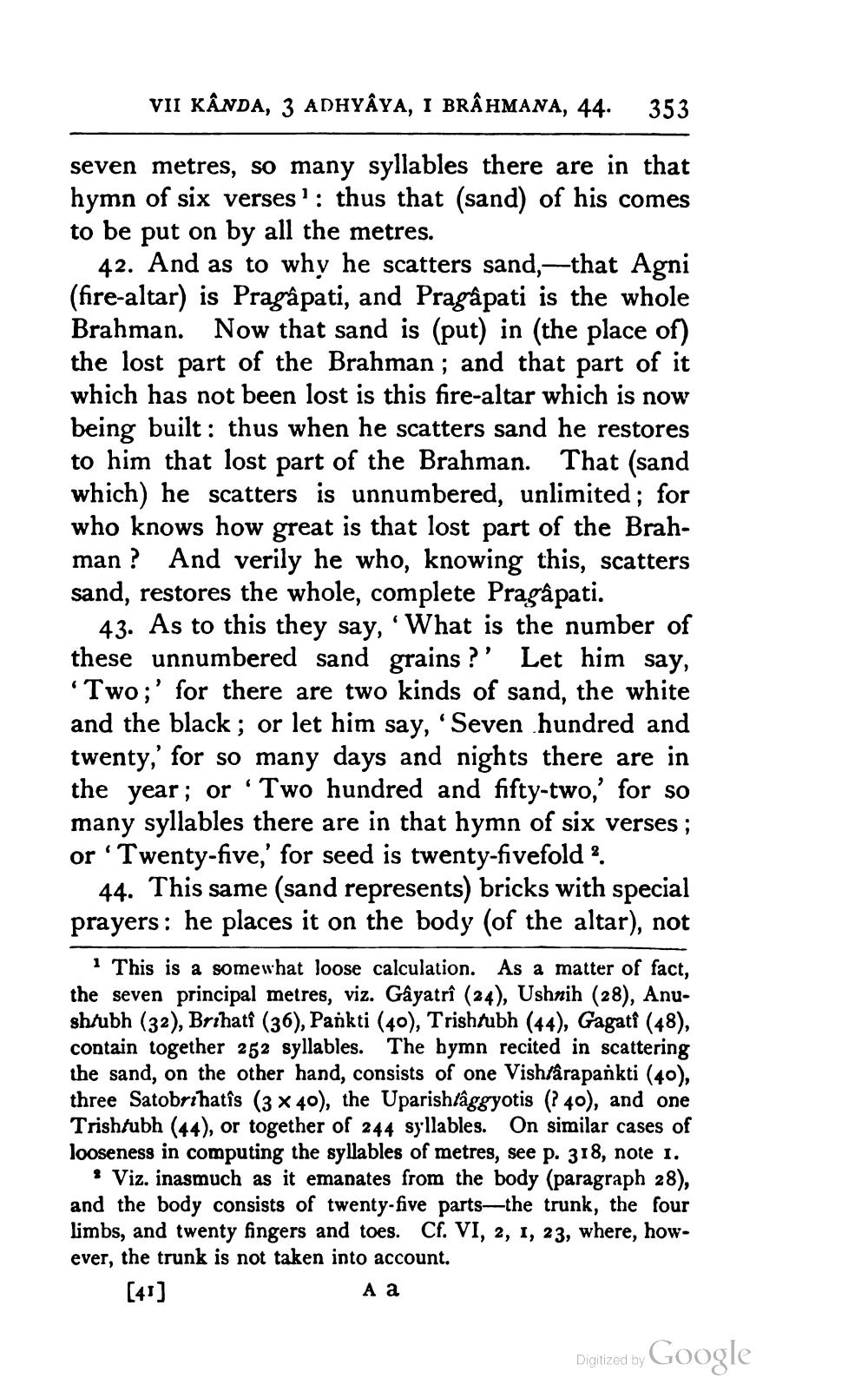________________
VII KÂNDA, 3 ADHYAYA, I BRÂHMANA, 44.
353
seven metres, so many syllables there are in that hymn of six verses': thus that (sand) of his comes to be put on by all the metres.
42. And as to why he scatters sand,—that Agni (fire-altar) is Pragâpati, and Pragâpati is the whole Brahman. Now that sand is (put) in (the place of) the lost part of the Brahman; and that part of it which has not been lost is this fire-altar which is now being built : thus when he scatters sand he restores to him that lost part of the Brahman. That (sand which) he scatters is unnumbered, unlimited; for who knows how great is that lost part of the Brahman? And verily he who, knowing this, scatters sand, restores the whole, complete Pragâpati.
43. As to this they say, 'What is the number of these unnumbered sand grains ?' Let him say, "Two;' for there are two kinds of sand, the white and the black; or let him say, 'Seven hundred and twenty,' for so many days and nights there are in the year; or 'Two hundred and fifty-two,' for so many syllables there are in that hymn of six verses ; or 'Twenty-five,' for seed is twenty-fivefold ?
44. This same (sand represents) bricks with special prayers: he places it on the body (of the altar), not
1 This is a somewhat loose calculation. As a matter of fact, the seven principal metres, viz. Gayatrî (24), Ushnih (28), Anush/ubh (32), Brihati (36), Pankti (40), Trishubh (44), Gagati (48), contain together 252 syllables. The hymn recited in scattering the sand, on the other hand, consists of one Vishtarapankti (40), three Satobrihatîs (3 X 40), the Uparishlâggyotis ( 40), and one Trishtubh (44), or together of 244 syllables. On similar cases of looseness in computing the syllables of metres, see p. 318, note 1.
• Viz. inasmuch as it emanates from the body (paragraph 28), and the body consists of twenty-five parts—the trunk, the four limbs, and twenty fingers and toes. Cf. VI, 2, 1, 23, where, however, the trunk is not taken into account. [41]
A a
Digitized by Google




